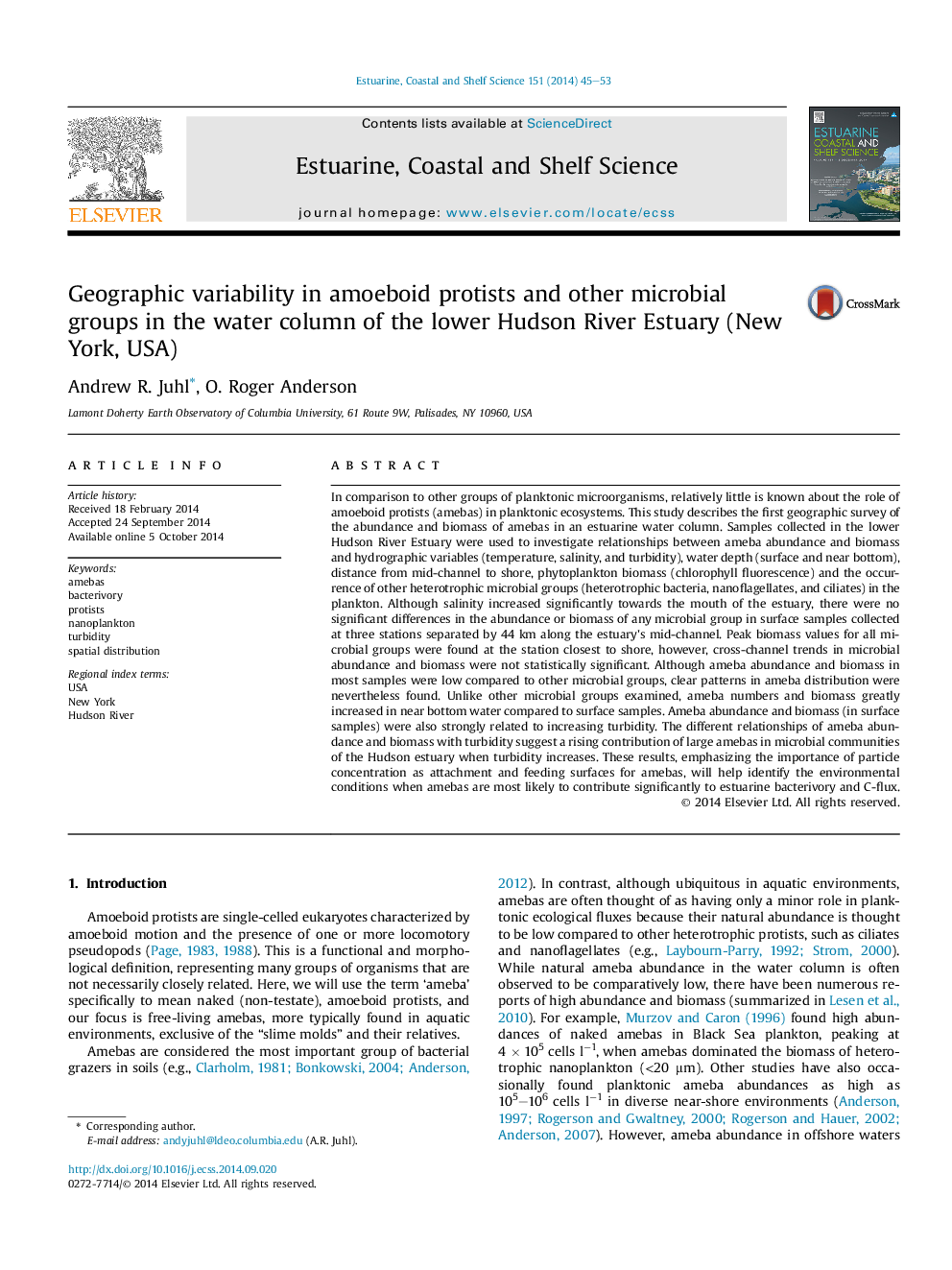| کد مقاله | کد نشریه | سال انتشار | مقاله انگلیسی | نسخه تمام متن |
|---|---|---|---|---|
| 6384779 | 1626645 | 2014 | 9 صفحه PDF | دانلود رایگان |
- New evidence is presented on the spatial distribution of amebas in an estuary.
- Amebas are occasionally abundant in the water column, though rarely studied.
- Ameba counts and biomass peaked near shore and near bottom.
- Turbidity was strongly correlated to ameba abundance and biomass.
In comparison to other groups of planktonic microorganisms, relatively little is known about the role of amoeboid protists (amebas) in planktonic ecosystems. This study describes the first geographic survey of the abundance and biomass of amebas in an estuarine water column. Samples collected in the lower Hudson River Estuary were used to investigate relationships between ameba abundance and biomass and hydrographic variables (temperature, salinity, and turbidity), water depth (surface and near bottom), distance from mid-channel to shore, phytoplankton biomass (chlorophyll fluorescence) and the occurrence of other heterotrophic microbial groups (heterotrophic bacteria, nanoflagellates, and ciliates) in the plankton. Although salinity increased significantly towards the mouth of the estuary, there were no significant differences in the abundance or biomass of any microbial group in surface samples collected at three stations separated by 44Â km along the estuary's mid-channel. Peak biomass values for all microbial groups were found at the station closest to shore, however, cross-channel trends in microbial abundance and biomass were not statistically significant. Although ameba abundance and biomass in most samples were low compared to other microbial groups, clear patterns in ameba distribution were nevertheless found. Unlike other microbial groups examined, ameba numbers and biomass greatly increased in near bottom water compared to surface samples. Ameba abundance and biomass (in surface samples) were also strongly related to increasing turbidity. The different relationships of ameba abundance and biomass with turbidity suggest a rising contribution of large amebas in microbial communities of the Hudson estuary when turbidity increases. These results, emphasizing the importance of particle concentration as attachment and feeding surfaces for amebas, will help identify the environmental conditions when amebas are most likely to contribute significantly to estuarine bacterivory and C-flux.
159
Journal: Estuarine, Coastal and Shelf Science - Volume 151, 5 December 2014, Pages 45-53
